A shooting at a Colorado supermarket killed 10 people Monday, including a police officer, and a suspect was in custody, authorities said.
WATCH: https://toronto.citynews.ca/2021/03/22/police-responding-to-active-shooter-at-colorado-supermarket-2/
Boulder police Chief Maris Herold announced the death toll at a news conference Monday night, fighting back tears.
The suspect was getting medical treatment and there was no further threat to the public, authorities said. Officers had escorted a shirtless man with blood running down his leg out of the store in handcuffs but authorities would not say if he was the suspect.
The officer who was killed was Eric Talley, 51, who had been with Boulder police since 2010, Herold said.
Victims’ families were still being notified so their names weren’t released, Boulder County District Attorney Michael Dougherty said.
“This is a tragedy and a nightmare for Boulder County, and in response, we have co-operation and assistance from local, state and federal authorities,” Dougherty said.
Yamaguchi said police were still investigating and didn’t have details on a motive for the shooting at the King Soopers store in Boulder, which is about 25 miles (40 kilometres) northwest of Denver and home to the University of Colorado.
Dean Schiller told The Associated Press that he had just left the supermarket when he heard gunshots and saw three people lying face down, two in the parking lot and one near the doorway. He said he “couldn’t tell if they were breathing.”
Video posted on YouTube showed one person on the floor inside the store and two more outside on the ground. What sounds like two gunshots are also heard at the beginning of the video.

Law enforcement vehicles and officers massed outside the store, including SWAT teams, and at least three helicopters landed on the roof. Some windows at the front of the store were broken.
At one point, authorities said over a loudspeaker that the building was surrounded and that “you need to surrender.”
Sarah Moonshadow told the Denver Post that two shots rang out just after she and her son, Nicolas Edwards, finished buying strawberries. She said she told her son to get down and then “we just ran.”
Once they got outside, she said they saw a body in the parking lot. Edwards said police were speeding into the lot and pulled up next to the body.
“I knew we couldn’t do anything for the guy,” he said. “We had to go.”
James Bentz told the Post that he was in the meat section when he heard what he thought was a misfire, then a series of pops.
“I was then at the front of a stampede,” he said.
Bentz said he jumped off a loading dock out back to escape and that younger people were helping older people off of it.
One person was taken from the shooting scene to Foothills Hospital in Boulder, said Rich Sheehan, spokesman for Boulder Community Health, which operates the hospital.
Colorado Gov. Jared Polis tweeted a statement that his “heart is breaking as we watch this unspeakable event unfold in our Boulder community.”

Police had told people to shelter in place amid a report of an “armed, dangerous individual” about 3 miles (5 kilometres) away from the grocery store but said at the news conference later that it wasn’t related to the shooting.
The FBI said it’s helping in the investigation at the request of police.
White House press secretary Jen Psaki tweeted that President Joe Biden had been briefed on the shooting.
In a statement, the King Soopers chain offered “thoughts, prayers and support to our associates, customers, and the first responders who so bravely responded to this tragic situation. We will continue to co-operate with local law enforcement and our store will remain closed during the police investigation.”
Kevin Daly, owner of Under the Sun Eatery and Pizzeria Restaurant a block or so from the supermarket, said he was in his shop when he saw police cars arriving and shoppers running from the grocery store. He said he took in several people to keep them warm, and others boarded a bus provided by Boulder police and were taken away.
___
Nieberg is a corps member for the Associated Press/Report for America Statehouse News Initiative. Report for America is a non-profit national service program that places journalists in local newsrooms to report on undercovered issues.

Province-wide restaurant workers will get the COVID-19 vaccine in Phase 2, government officials confirm to 680 NEWS.
WATCH: https://toronto.citynews.ca/2021/03/22/ontario-restaurant-workers-to-be-vaccinated-as-part-of-phase-2-government-officials-say/
On March 5, Ontario officials released a list of eligible people for the COVID-19 vaccine during this phase.
This stage will see shots administered based on risk factors including age, neighbourhood, existing health conditions, and inability to work from home.
The province is planning on vaccinating nine million people in Phase 2 and the updated plan does not include the recently approved Johnson & Johnson vaccine.
The province has split up workers into different categories including the following:
Those who live and work in congregate settings
All at-risk staff, essential caregivers, and residents from the following congregate settings will be eligible for the COVID-19 vaccine:
- Supportive housing
- Developmental services/intervenor and supported independent living (SIL)
- Emergency homeless shelters
- Other homeless populations not in shelters
- Mental health and addictions congregate settings
- Homes for special care Violence Against Women (VAW) shelters and Anti-Human Trafficking (AHT) residents
- Children’s residential facilities
- Youth justice facilities
- Indigenous healing and wellness
- Provincial and demonstration schools
- Farmworkers who live in congregate settings, including Temporary foreign workers, Bail beds and Indigenous bail beds
- Adult correctional facilities
Essential workers/those who can’t work from home
Workers who can’t work from home will be vaccinated in two groups encompassing a variety of sectors. These include elementary and secondary school staff – as well as bus drivers – food manufacturing workers, childcare workers, and high-risk and critical retail workers such as grocery and pharmacy.
The second group will be eligible once the first group has been vaccinated.
First group of essential workers (730,000 people):
- Elementary/secondary school staff and bus drivers that transport students
- Workers responding to critical events (e.g., police, fire, compliance, funeral, special constables)
- Child care workers
- Licensed foster care workers
- Food manufacturing workers
- Agriculture and farm workers
Remaining workers to be eligible (1.4 million people)
- High-risk and critical retail workers (grocery and pharmacies)
- Remaining manufacturing workers
- Social workers (including youth justice)
- Courts and justice system workers (including probation and parole)
- Lower-risk retail workers (wholesalers, general goods)
- Transportation, warehousing, and distribution
- Energy, telecom (data and voice), water and wastewater management
- Financial services
- Waste management
- Mining, oil, and gas workers
After Phase 2 is completed, everyone b etween the ages of 16 and 59 will be eligible for their first dose.
etween the ages of 16 and 59 will be eligible for their first dose.
As part of Phase 2 of the rollout, the province will see vaccine shipments ramp up throughout March, with the most significant coming from Moderna.
Though non-committal on the matter, Retired Gen. Rick Hillier said mass-vaccinations could begin on June 20, depending entirely on vaccine supply in the coming months.
“Our aim is to allow the province of Ontario to have a first needle in the arm of every eligible person who wants it by the first day of summer,” he said. “That’s the challenge goal I put out there.”

Phase 2 is expected to formally begin in April.
The province also says that certain hotspots will receive additional vaccine supplies, such as Toronto, Peel, Durham, Halton, Hamilton, and York.

York Region announced Monday that it will be launching drive-through vaccine sites soon, along with expanding eligibility for the COVID-19 vaccine to residents aged 70 years and older.
One drive-through site is slated to open at Canada’s Wonderland on March 29 and is currently being tested. Like all other sites, these clinics are also by appointment only.
“We are increasing the options for our folks. There are folks that may have some mobility issues, but can get into a car and they might find the drive-through option to be pretty good,” said Dr. Karim Kurji, York Region’s medical officer of health.
In addition, starting Tuesday at 8:30 a.m., those born in 1951 and earlier can book an appointment on the region’s vaccine portal. Those in earlier age groups are still eligible to book.
Appointments can also be booked via telephone by calling the specific clinics. Walk-ins will not be permitted.
The following locations will administer vaccines to the newly eligible priority group:
- Aaniin Community Centre located in the City of Markham, operated by York Region Public Health
- Cornell Community Centre located in the City of Markham, operated by Eastern York Region North Durham (EYRND) Ontario Health Team (OHT)
- Cortellucci Vaughan Hospital located in the City of Vaughan, operated by Mackenzie Health
- Georgina Ice Palace located in the Town of Georgina, operated by York Region Public Health
- Maple Community Centre located in the City of Vaughan, operated by York Region Public Health
- Ray Twinney Recreation Complex located in the Town of Newmarket, operated by Southlake Regional Health Centre
- Richmond Green Sports Centre located in the City of Richmond Hill, operated by York Region Public Health
Further, for eligible and vulnerable residents who cannot visit a vaccine clinic or use a drive-through, the region’s mobile outreach teams are set to begin vaccinating homebound people this week.
Staff involved in the mobile teams include paramedics, physicians, nurses, pharmacists and public health immunizers.
“We have accumulated, with our partnerships with many other seniors groups, a list of individuals who need to be visited in their homes,” said Dr. Kurji.
Meanwhile, a pilot program offering Oxford-AstraZeneca shots to those 60 and older that started this month in Toronto, Kingston and Windsor pharmacies is expected to expand to 700 sites over the next few weeks.
Ontario’s solicitor general Sylvia Jones said pharmacies in virus hotspots will be prioritized and Peel Region will “absolutely” be next for the pharmacy vaccine program, based on high rates of COVID-19 there.
Jones said the expansion depends on supply and the exact sites are being determined with the Ontario Pharmacists Association, looking at health units with higher COVID-19 positivity rates.
The government has been criticized for passing over hotspot neighbourhoods and regions in the initial pharmacy pilot.
Jones said hotspots weren’t forgotten, but the province was limited by vaccine supply and the April 2 expiry date for the first doses.
With files from Lucas Spadafora and The Canadian Press.
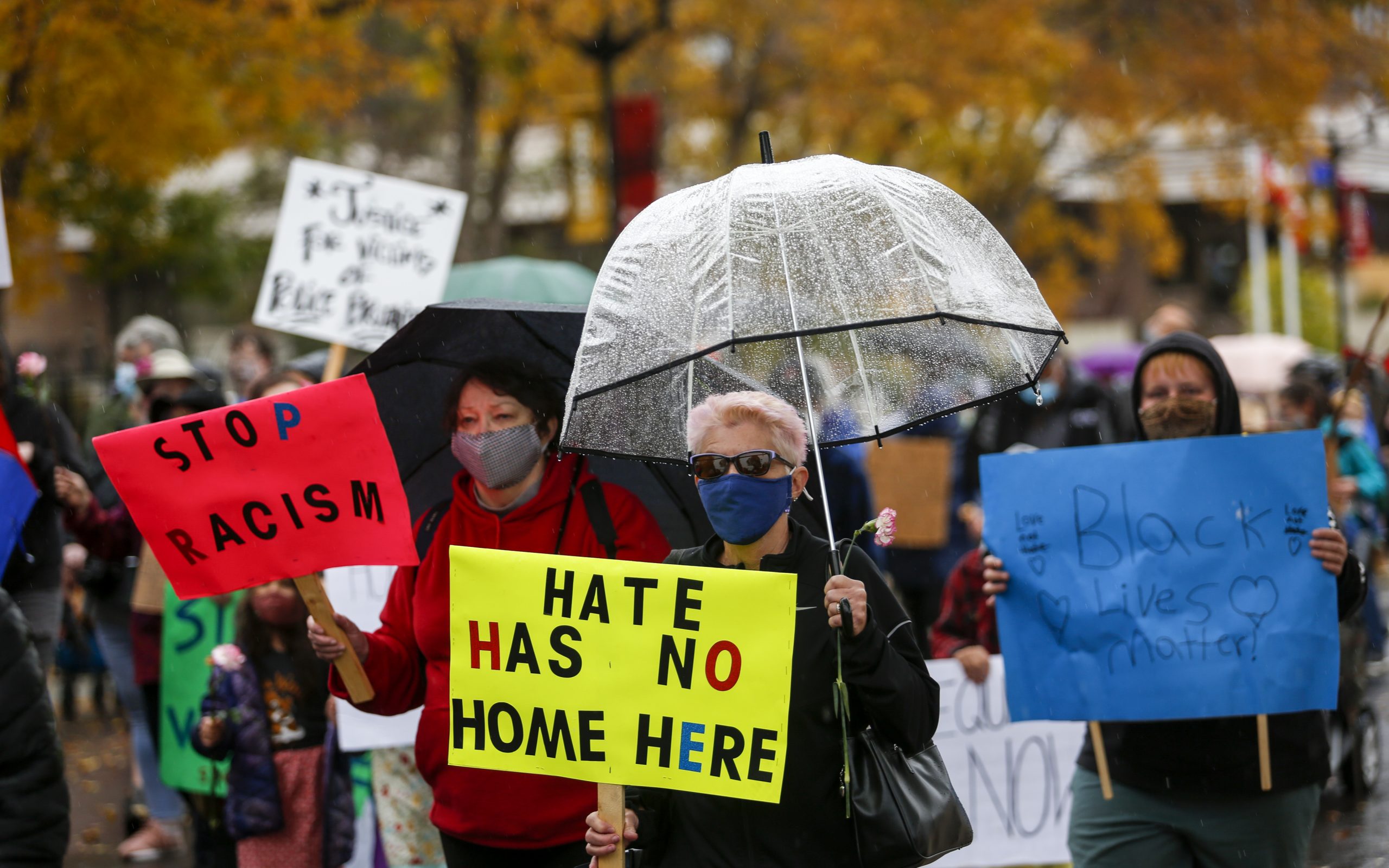
Noor Fadel says most people assume that the night she was attacked by a racist man on a SkyTrain in Vancouver in 2017 was the worst night of her life.
In fact, the nights that followed were even more harrowing, as her social-media post about the assault went viral and she received a torrent of hateful and threatening messages.
“People think that hiding behind a screen and saying something won’t have an impact. It does. It has a huge impact on people,” she said.
“That one message that you may think could not hurt someone, it’s just a simple message, it can actually be the message to ruin someone’s entire day, if not someone’s life.”
Fadel, 22, is sharing her story in support of a campaign launched by the Canadian Race Relations Foundation and YWCA Canada to highlight the consequences of social-media hate.
The #BlockHate campaign coincides with a separate, unrelated survey by the Association for Canadian Studies, which sheds new light on racism in Canada both online and offline.
To mark the International Day for the Elimination of Racial Discrimination on Sunday, the association commissioned Leger Marketing to ask Canadians about their views on racism.
The survey found that seven in 10 respondents are worried about the degree of racism in the country, a concern held by three in four participating women and people between 18 and 34.
One in two survey participants who identify as visible minorities have felt attacked by hateful comments on social media, and nearly six in 10 said they have witnessed hatred online.
Those who were exposed to hateful internet comments were more likely to be worried about racism, said association president Jack Jedwab.
“It’s not so much the violent incidents that we’ve seen over the past year, which have attracted considerable media attention, that are fuelling people’s concerns about racism,” he said.
“It’s also the extent to which people are witnessing this phenomenon expand in social media.”
The survey also suggested that one in three Canadians admit to holding a negative view of Muslims, one in five have a negative view of Indigenous people and one in seven state a negative view of Chinese people, Jews or immigrants.
People who have never met any members of those groups are more likely to think negatively of them, suggesting that social media is playing a role once again, said Jedwab.
“They get information from social media about these groups … and the outcome, unfortunately, is that they hold negative or prejudicial views.”
The survey of 1,514 Canadians was conducted online between March 12 and 14 using web panels. The polling industry’s professional body, the Marketing Research and Intelligence Association, says online surveys cannot be assigned a margin of error as they are not a random sample and therefore are not necessarily representative of the whole population.
It also suggested Atlantic Canadians and Ontarians are most worried about the degree of racism in Canada, and that Canadians are more concerned about racism in the country and province than in their neighbourhoods.
The findings ring true for Fadel, who said she encountered racism many times in Vancouver before the incident on the SkyTrain in December 2017, when she was 18.
She said a man approached her and yelled that he was going to kill her and all Muslims before grabbing her head and forcing it toward his crotch.
He then struck her across the face, prompting another transit rider to push him off her.
Pierre Belzan, 46, received a suspended sentence and two years probation in 2018 after pleading guilty to assault and threatening to cause death or bodily harm.
Fadel said she took to social media after the incident because she was sick of hearing that racism in Canada doesn’t exist. While her Facebook post received thousands of supportive comments, the hateful ones stood out to her the most.
The messages included comments telling the Canadian-born woman to “go back to her country,” calling her sexist and racist slurs, accusing her of lying and threatening to kill her.
She said she only realized while isolated during the COVID-19 pandemic that she is still traumatized by the messages, years later, and she is still working on healing.
The #BlockHate campaign launches Monday and aims to encourage regulation to minimize the volume and frequency at which online hate speech and racism is spread.
Online hate is often a precursor to violent, in-person attacks against marginalized people, noted Mohammed Hashim, director of the Canadian Foundation for Race Relations.
People with hateful views will likely always exist, but social media has handed them the biggest microphone they’ve ever had, Hashim said.
“What we’re looking to do is to constrict that. We understand that it’s going to exist, but let it remain in the fringes of society,” he said.
Regulations must ensure that hateful posts can be taken down quickly to decelerate their spread, and include deterrents so posters experience consequences, he said.
Hashim also pointed out that logging off is not an option for victims of online attacks now that everyone’s personal and professional lives are increasingly virtual, especially during COVID-19.
“If we don’t deal with this now, this is only going to get worse,” he said.
“If we leave it the way it is, I want people to think about: what is the world that we’re creating for the next generation?”
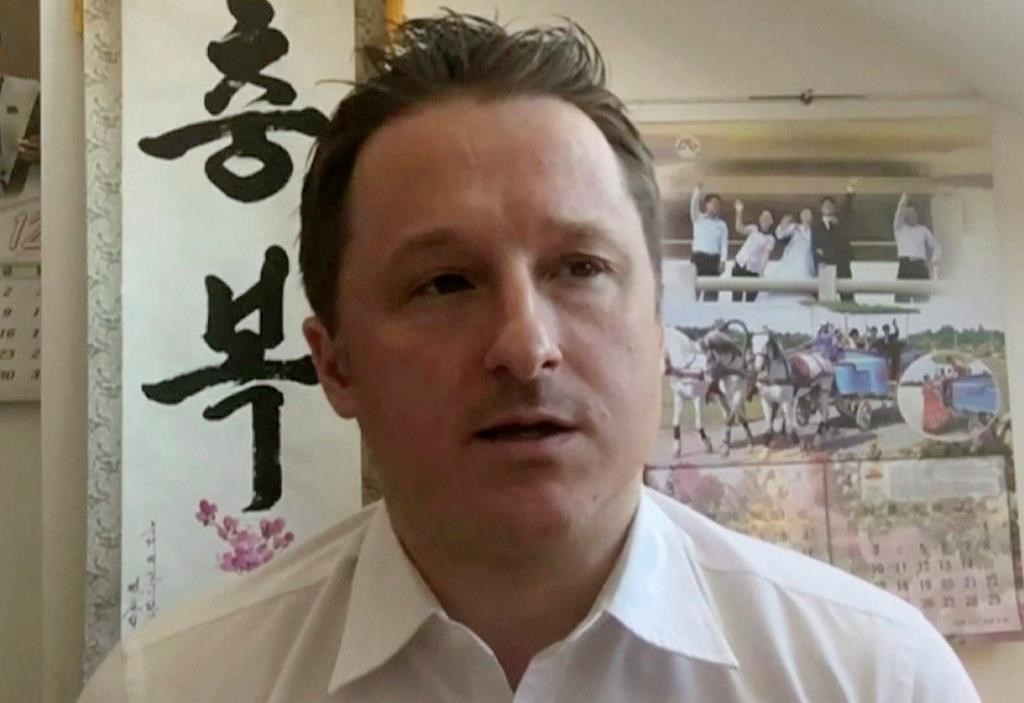
A second Canadian citizen held for more than two years on spying charges in apparent retaliation for Canada’s arrest of a senior executive of the telecoms giant Huawei went on trial in Beijing on Monday.
The trial Monday of analyst and former diplomat Michael Kovrig in Beijing follows an initial hearing in the case of entrepreneur Michael Spavor in the northeastern city of Dandong on Friday.
Canadian diplomats have been refused access to trials and been told hearings would be held behind closed doors because of alleged national security concerns. Diplomats and journalists have showed up nonetheless to seek information and show support.
Outside Beijing’s No. 2 Intermediate Court, Jim Nickel, the Canadian Embassy’s deputy chief of mission, told journalists he had been told the trial had begun, but was barred from entry in what he said was a violation of China’s international and bilateral treaty obligations.
“Michael Kovrig has been detained for more than two years now. He’s been arbitrarily detained and now we see that the court process itself is not transparent,” Nickel told reporters. “We’re very troubled by this but we thank those who have come out from the embassies here in Beijing and the international support that we’ve had for Michael, for Canada and the call that many of us are making for their immediate release.”
Nickel said 26 countries had sent representatives to show their support, including the U.S., the U.K, Australia and many European nations. It wasn’t clear how long the trial would last or when a verdict would be announced.
The government has provided almost no information about the accusations against the two, but a newspaper run by the ruling Communist Party alleges they collaborated in stealing state secrets and sending them abroad. No verdict has been announced in Spavor’s case and it wasn’t clear if additional hearings would be held.
However, such cases are almost always predetermined in China, and Beijing is seen as using Kovrig and Spavor as leverage to obtain the release of Huawei executive Meng Wanzhou, who was arrested at the request of the U.S. at the airport in Vancouver, British Columbia, in December 2019. The two Canadians were detained in China just days later.
Meng is sought by the U.S. on fraud charges related to the telecom giant’s dealings with Iran, which is under American financial sanctions.
The two Canadians have been held ever since, while Meng has been released on bail. They were charged in June 2020 under China’s broadly defined national security laws.
Canadian Prime Minister Justin Trudeau blasted Beijing for holding the trial “in secret” without access for consular officials.
“Their arbitrary detention is completely unacceptable, as is the lack of transparency around these court proceedings,” Trudeau said in Ottawa.
“China needs to understand that it is not just about two Canadians. It’s about respect for the rule of law and relationships with a broad range of Western countries that are at play with the arbitrary detention and the coercive diplomacy that they’ve engaged in.”
Meng’s case has deeply angered China’s government, which has promoted Huawei as a global leader in mobile communications technology, and sees her detention as a deliberate attempt to malign Chinese companies and impede the nation’s growing economic and political clout. Beijing has demanded her immediate and unconditional release and has also restricted various Canadian exports, including canola oil seed, and handed death sentences to another four Canadians convicted of drug smuggling.
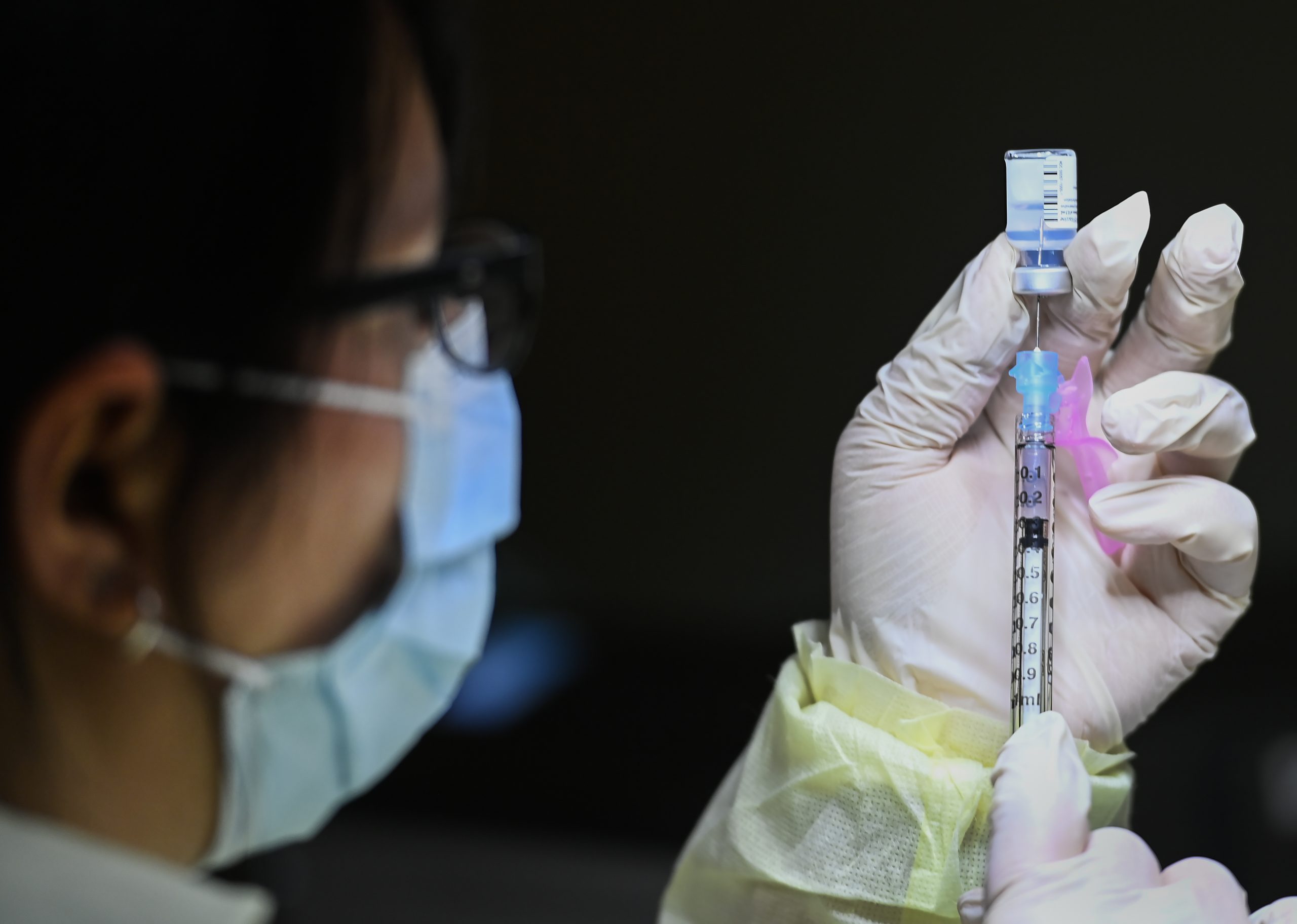
The COVID-19 vaccine rollout has resulted in a drop in the number of infections in people over the age of 80, Canada’s chief public health officer said Sunday as several provinces prepared to further expand their immunization rollouts.
Dr. Theresa Tam said on Twitter that the reduction in cases among older adults, along with fewer outbreaks in long-term care settings, “reassure us that vaccines will bring more (and) greater benefits in the weeks to come.”
Her statement came as several provinces prepared to expand their immunization campaigns in the coming days.
Ontario is lowering the age of eligibility for shots in the general population from 80 to 75 on Monday, while New Brunswick is stepping up a program to vaccinate high school teachers.
It’s expected that 4,500 staff from high schools provincewide will receive a first dose at a clinic in one of 16 locations, the New Brunswick government said.
Quebec, meanwhile, is expected to begin giving vaccines to people 65 and up in Montreal-area pharmacies on Monday, one week after the provincial booking system opened for reservations.
Despite the positive vaccine news, Tam sounded a note of caution over case counts, which are back on the rise after declining earlier this year.
She said infection rates are highest among those aged 20 to 39, who are less likely to get seriously ill but who can spread the virus, including the more transmissible variants, which are gaining steam across the country.
“Circulation of COVID-19 in younger, more mobile and socially connected adults presents an ongoing risk for spread into high-risk populations and settings,” she said in a statement.
“The emergence and spread of certain SARS-CoV-2 virus variants heightens this concern.”
The highest case count on Sunday was in Ontario, which reported 1,791 new COVID-19 infections, and 18 added deaths related to the virus.
In Quebec, Health Minister Christian Dube raised the prospect of a future third wave of infections, even as he lauded the province’s “encouraging” numbers — including 648 cases Sunday — and the increased pace of vaccine delivery.
“It’s above all not the time to relax our efforts,” Dube wrote on Twitter.
“We have to do everything we can to avoid a third wave.”
Saskatchewan had a setback in its vaccine delivery plans on Sunday as health officials reported the province would get 5,850 fewer doses of the Pfizer-BioNTech vaccine due to a damaged thermal shipper.
The province reported 178 new COVID-19 cases, driven in large part by 105 new cases in the Regina zone where variants of the virus have been spreading.
Manitoba, meanwhile, counted 90 new cases and seven deaths, while Alberta logged 555 new cases of the virus and two deaths.
Things looked brighter farther east, with New Brunswick recording only one new case of the virus, and Newfoundland and Labrador reporting none.
Nova Scotia logged six new diagnoses.
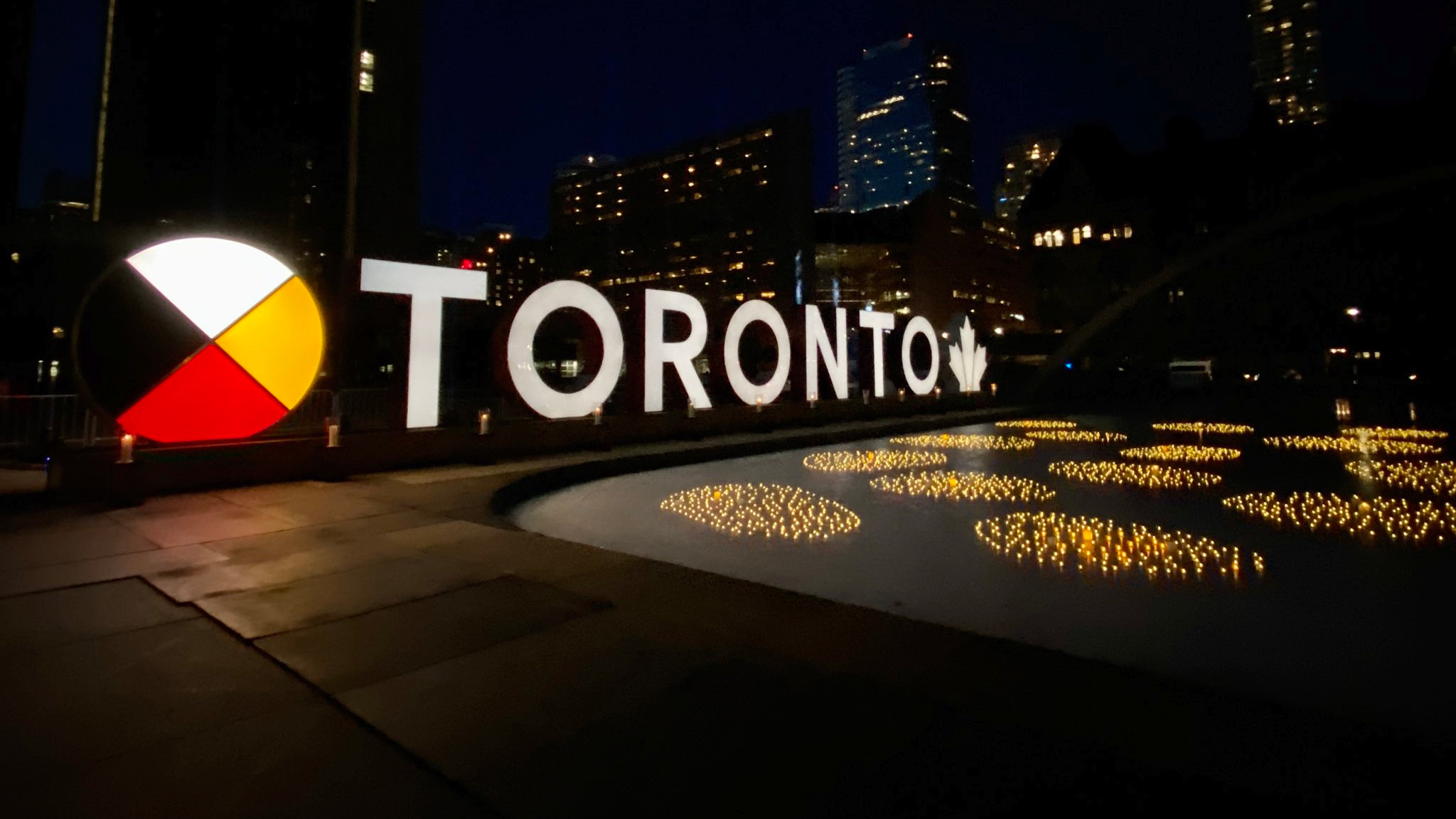
The City of Toronto staged a virtual commemorative ceremony Sunday night to remember the more 2,700 Torontonians who lost their lives to COVID-19 in the past year.
WATCH: https://toronto.citynews.ca/2021/03/21/toronto-remembers-lives-lost-during-covid-19-pandemic/
The sunset vigil comes on the first anniversary of the very first coronavirus-related death in the city.
Candles were lit across the Nathan Phillips Square skating rink to mark each of the 2,750 lives lost to the virus as 12 bell tolled for the number of months that have passed.
“The loss experienced in our city over the past 12 months will forever be ingrained in our city’s history,” said Tory. “More than 2,750 people have died, representing our mothers, fathers, grandparents, friends, neighbours and colleagues. We must take time to reflect and mourn each and every person who is no longer with us and use light to help guide our city through these tragic times.”
“The memory of our loved ones will live through the darkness of night, through the burden of grief and into the light of a new day.”
“We’re almost there. And we know how good it can be when we get there.”
Tory said he would also seek public input into how to honour Torontonians who have died as a result of COVID-19.
Toronto-based blues vocalist and actress Shakura S’Aida read from the poem, “Do Not Stand At My Grave And Weep” by Margaret Elizabeth Frye, before singing “Amazing Grace” to close the ceremony.
Torontonians were encouraged to turn on a porch and/or balcony light or place a light in the window in remembrance of those whose lives have been lost as a result of the pandemic.
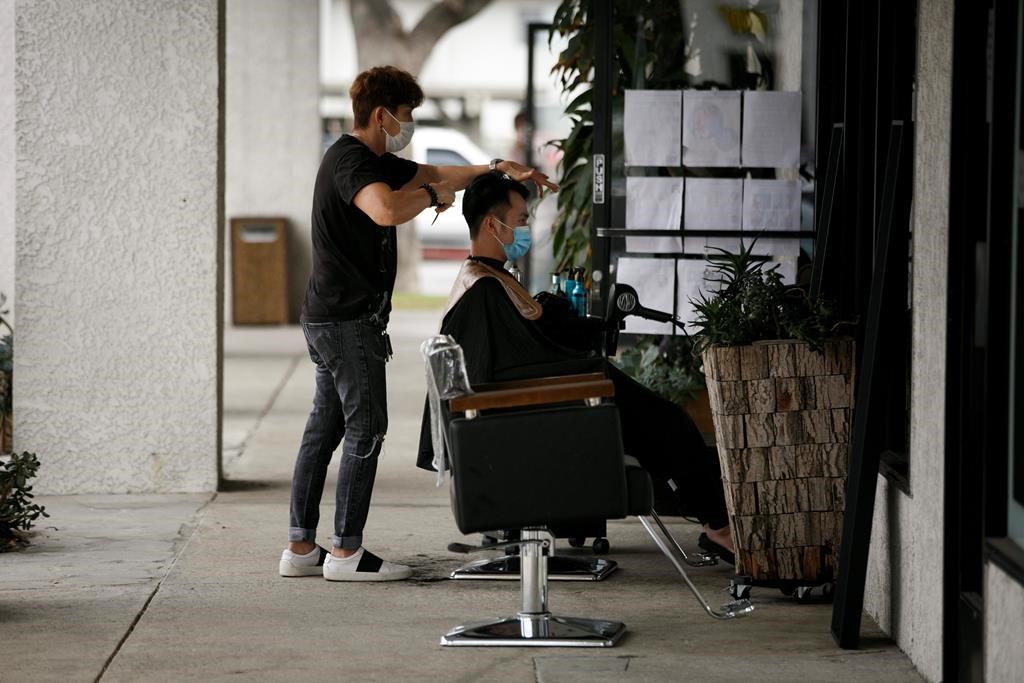
As Toronto approaches four months of strict pandemic measures that have kept hair salons shuttered, health officials in the city say they aren’t ruling out allowing haircuts and other such services to resume outdoors.
Toronto’s top doctor, Eileen de Villa, said this week that while the focus so far has been on outdoor dining and fitness, health officials are open to considering other activities that could take place outside.
“We don’t preclude discussions on any of the items that that might be outdoors, because we know for a fact that activities that are undertaken outdoors are clearly much lower risk than those that are indoors,” she said.
The city is currently in the “grey-lockdown” zone of Ontario’s colour-coded pandemic plan, which allows some retailers to open with limits but only permits restaurants to do takeout and delivery orders.
Local health officials have asked the province to loosen some of the restrictions on outdoor activities.
“It probably sounds like such a first-world problem but… one of the simplest things we can do right now is take care of ourselves and I feel like feeling like you’re put together is part of that”
Some Toronto salon owners, however, said Thursday that though they’re eager to get back to work, doing so outdoors poses several logistical challenges.
They noted the lack of outdoor space at many salons, particularly in the city’s downtown, as well as the absence of electricity and water, which are required to wash and blow-dry hair.
What’s more, they said stylists and their clients would be at the mercy of the weather.
“I’m happy to get to work on anything right now but I don’t see that as being a really smooth process unless we have sunny, calm, bright days every day, and they allow salons to spread out on the sidewalk or even onto the (street) parking,” said Tyler Moore, owner of Parlour Salon, which has three locations across the city.
Even then, the number of stylists able to work in that space would be limited, as would the type of services they could offer, Moore said.
“You can’t wash their hair because they can’t go in to get it washed, so it’s just haircuts,” he said.
Sonia Yarkhani, the owner of Evolve Salon, said working outdoors would require a specific setup that would likely not be feasible for most salons.
“Our industry requires certain things, it’s not as easy as slapping highlights in foil and letting them sit.. we need to have proper chairs, to have the proper space, you need to have a mirror outside, you need to have electricity,” she said.
“If you didn’t care about the quality of your work, and the experience of your customers, then yeah, I could just throw a chair on my balcony and I can cut someone’s hair. But is it going to turn out good? I don’t know,” she said.
Going to the salon is also an intimate experience, and some clients may not enjoy having that moved out in the open, Yarkhani said.
“You’re sitting there with wet hair, foils on your head… unless the outdoor space is private, people probably won’t feel comfortable being outside getting their hair done,” she said.
Aside from the possible discomfort of inclement weather or lack of privacy, being outdoors also poses technical challenges when it comes to working on hair, said Dat Tran, who owns Album Hair in Toronto’s east and west ends.
“You can’t control the temperature when it comes to colour,” he said. “Colour has to be room temperature or it doesn’t process really well. I don’t think a lot of people understand that aspect of it.”
He said it’s likely only a small percentage of salons would be able to move their operations outdoors.
A better solution to help struggling salons would be to designate hair stylists as frontline workers so they could be prioritized for vaccination, Tran said.
Toronto resident Allison Miceli said she hasn’t had a haircut since September, and at this point, she would be open to an outdoor appointment if it meant being able to see her stylist.
“It probably sounds like such a first-world problem but… one of the simplest things we can do right now is take care of ourselves and I feel like feeling like you’re put together is part of that,” she said.
Miceli said she’s been struggling to understand why salons have had to remain closed when some other businesses have reopened in some capacity.
“The government needs to find a solution so people in that field can also return to some sense of work,” she said.
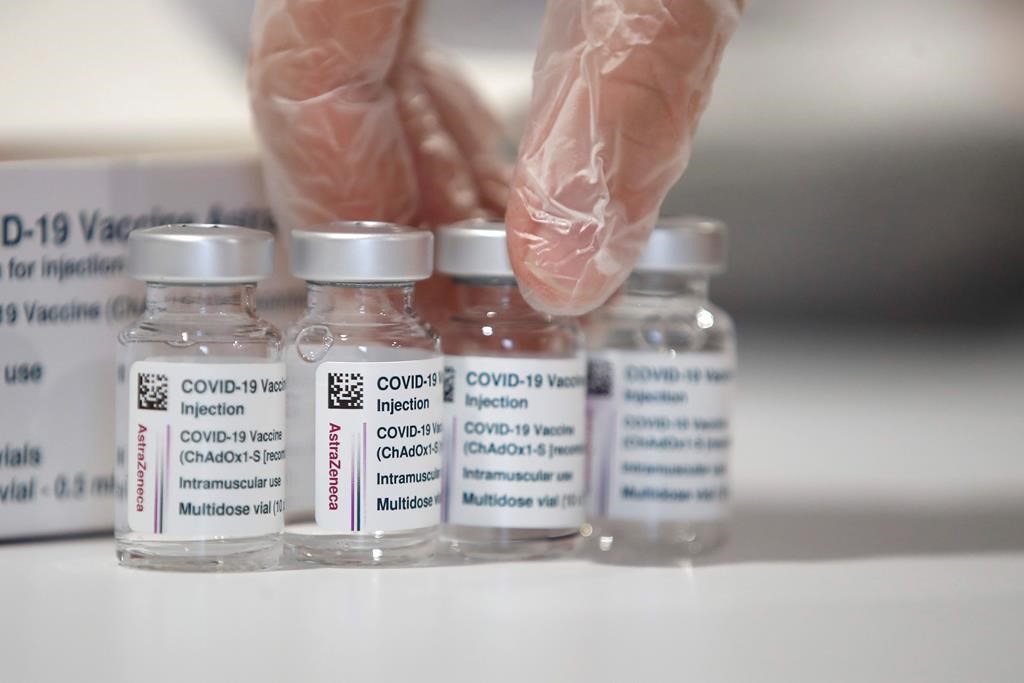
Canada’s procurement minister says a deal is close to receive Oxford-AstraZeneca vaccine doses from the U.S., while the military commander in charge of the rollout here says all adults who wish could be able to get their first shot by July 1.
“After numerous discussions with the Biden administration, Canada is in the process of finalizing an exchange agreement to receive 1.5 million doses of the AstraZeneca vaccine from the U.S.,” Anita Anand said on Twitter on Thursday.
“We look forward to providing an update to Canadians once the details are finalized.”
White House press secretary Jen Psaki said earlier that another 2.5 million doses would go to Mexico, but the details were still being worked out.
The United States currently has seven million “releasable” doses of the vaccine, which has yet to receive approval from its Food and Drug Administration, she said.
The loan would be in lieu of a future exchange of doses from Canada and Mexico, Psaki said – either of the AstraZeneca vaccine or a different one.
Premier Ford heard the news while at a press conference and said “God bless America” in response.
WATCH: https://toronto.citynews.ca/2021/03/18/u-s-lending-canada-mexico-astrazeneca-covid-19-vaccine/
“They’re coming to our rescue. Thank God. I’ve been bugging Trump, I’ve been bugging Biden — all of them. They must get sick of Doug Ford asking for help,” he said.
In January, Ford appealed directly to Biden to help Canada by sending a million doses of the Pfizer-BioNTech vaccine from a plant in Michigan.
Ford said today that he understands the United States would vaccinate its own citizens first, but he’s grateful they’re now trying to help their allies.
“President Biden, thank you … that’s what true neighbours do, you help each other out in a crisis,” he said.
U.S. President Joe Biden did not address the vaccine exchange when he updated Americans on that country’s vaccination progress.
He said the U.S. will have administered 100 million shots by Friday and that the country is on track to have enough vaccine supply to inoculate all adult Americans by the end of May.
Last week, Canadian provinces began administering 500,000 doses of the version of the AstraZeneca vaccine produced at the Serum Institute of India.
The federal government has purchased 20 million doses directly from AstraZeneca, but did not have a timeline for when they would arrive.
Regulators in Europe and the United Kingdom have concluded the benefits of the AstraZeneca vaccine outweigh the risks, but both are still studying whether the shot had any link to a small number of rare brain blood clots.
Earlier Thursday, Maj.-Gen. Dany Fortin, who is overseeing Canada’s vaccine program logistics, said provinces should have enough doses by the end of the next quarter for everyone who wants to be vaccinated.
But he later clarified that depends on provinces continuing to delay second doses up to four months so that more people can get their first shot sooner, as well as supplies coming in as planned.
“While there is no indications of disruptions or fluctuations in the production, it is a pandemic with global demand on vaccines that are produced as rapidly as possible,” Fortin said in Ottawa.
“We are always subject to fluctuations in the production and the challenges of a complicated supply chain across the world and into this country.”
Although initial deliveries from Johnson & Johnson and shipments directly from AstraZeneca are still in limbo, there is more than enough from Pfizer-BioNTech, Moderna and the Oxford-AstraZeneca vaccine made in India to pass the one-dose-per-person target by the end of June.
Procurement numbers show there are 36.5 million doses confirmed to be shipped by June 30. Only people over the age of 16 can currently be vaccinated and about 31 million Canadians are in that age group.
Ottawa still says Canadians will be fully vaccinated by the end of September.
Canada’s deputy chief public health officer Dr. Howard Njoo said almost seven per cent of Canadians have now received at least one dose of a COVID-19 vaccine, and 1.6 per cent have received two doses. The vast majority of doses given in the past two weeks have been first shots.
with files from News Staff, Mia Rabson in Ottawa, James McCarten in Washington and Shawn Jeffords in Toronto.
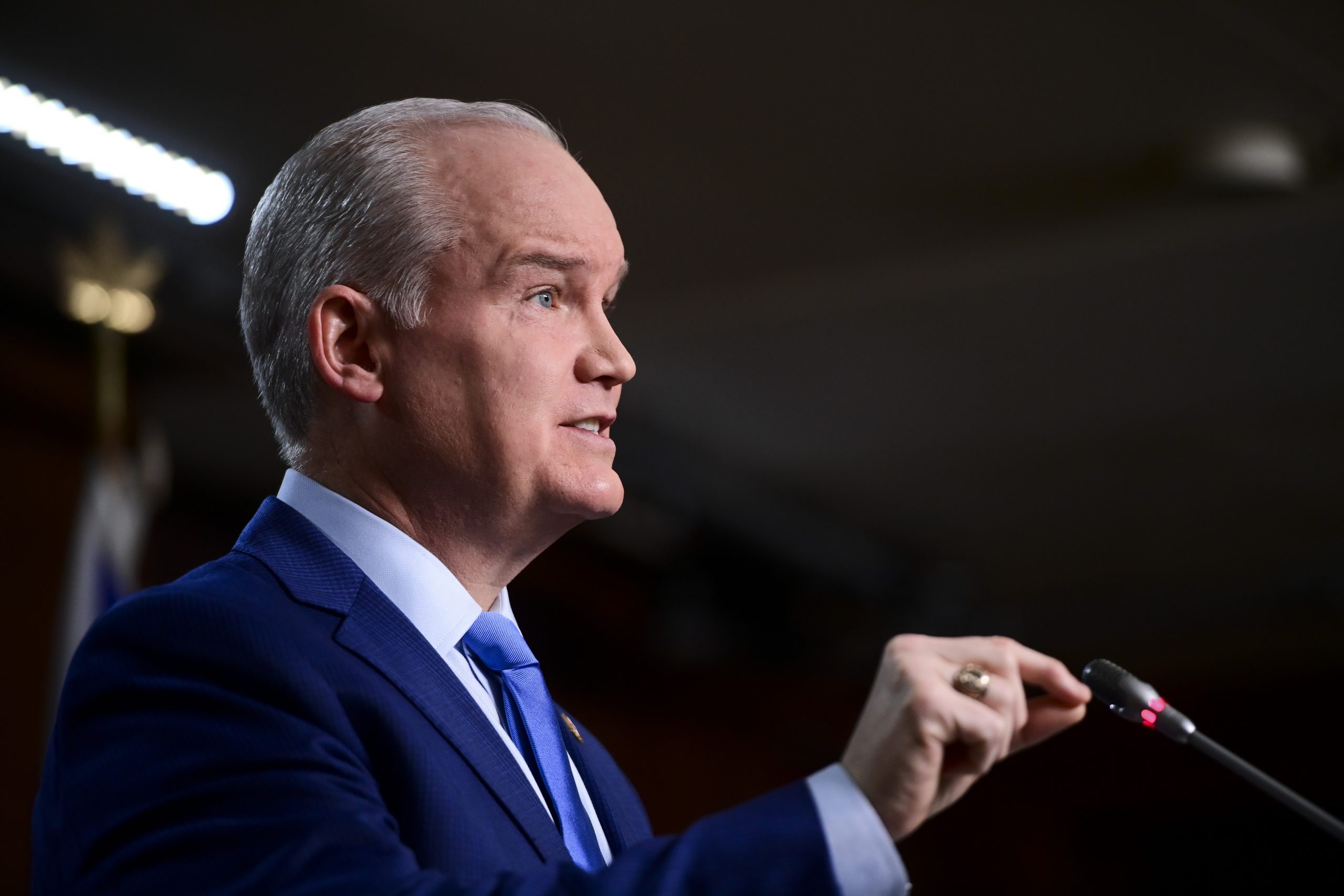
The Conservatives have yet to fulfil a promise to repay the federal wage subsidy, but the party said Thursday it is in solid financial shape and urged its members to rally together for the next federal election.
Still, the tensions between the grassroots and the party’s leadership were on display as thousands of members gathered virtually for the first policy convention since Erin O’Toole became leader last summer.
He’ll address the delegates in a highly-anticipated speech late Friday afternoon, after members have a chance to debate the policies they’d like to see O’Toole carry onto the campaign trail, and also how they’d like to see him run the party itself.
Both issues are on the table after the 2019 federal election saw the Tories fail to form government, and then slip into an internal scandal linked to the use of party funds to pay former leader Andrew Scheer’s personal expenses.
Grassroots anger over the use of party funds in that respect became an element of the subsequent leadership race.
But members were also irritated to learn the party used taxpayers’ dollars to subsidize political operations, taking advantage of the federal wage subsidy set up to help businesses pay workers despite a loss of revenue during the COVID-19 pandemic.
During his leadership campaign, O’Toole pledged to reform party operations and put a stop to receiving the wage subsidy, which he promised to pay back.
After he won, the party did stop dipping in, but outgoing party president Scott Lamb told thousands of delegates Thursday that repayment hasn’t begun.
“We look forward to repaying what we took from the wage subsidy program and give it back to Canadian people,” Lamb said.
The Bloc Quebecois was the only party in the House of Commons never to apply for the money. The Liberals and NDP also stopped taking it.
The federal Conservatives have outpaced their rivals in fundraising efforts for years, and even with the pause forced by the COVID-19 pandemic, they still ended 2020 ahead.
The party’s chief financial officer Scott Gibson told the convention the party is debt-free, and in 2020, raised $20.7 million.
“We ended the year with sufficient money in the bank, more than budgeted, to fund significant pre-election activities in order to support the new leader in advance of the next election, which may be very soon,” he said.
The update on the party’s financials was the first piece of official business for the convention, which kicked off Thursday not with balloons or rousing cheers, but with instructions on how to click the right links.
The COVID-19 pandemic has forced the event entirely online, and organizers tried to instil some of the normal camaraderie found on the convention floor via videos submitted by members proclaiming their love for Canada through songs, shots of honking geese on the river and container ships in harbours.
The opening elements of the convention also featured an appearance by former Conservative prime minister Stephen Harper, who paid tribute to the former head of the party’s fundraising arm, Irving Gerstein.
Tension over how Gerstein and Harper ran the party’s fundraising operations – the Conservative Fund operates distinct from the party’s overall governance – coloured the final days of Scheer’s tenure.
The fallout from that debate, which included how party funds were used for Scheer’s personal expenses and how much power the fund has to hire or fire party staff, came back around at the convention.
Members debated several motions aimed at changing the operation of the party’s governing council, the Fund, how leaders are selected and who can vote in those contests.
Results were not expected from the electronic voting until late Thursday night.
But one issue was dealt with cleanly – an effort by anti-abortion members of the party to introduce amendments to the party’s constitution from the “floor” of the convention, in order to get the party’s principles to reflect a clear anti-abortion stance.
Those members had tried to get the issue added to the convention’s policy discussions but failed so they then tried a different route through the party’s constitution.
But that effort was ruled out of order Thursday, under new rules adopted for the virtual convention format.













